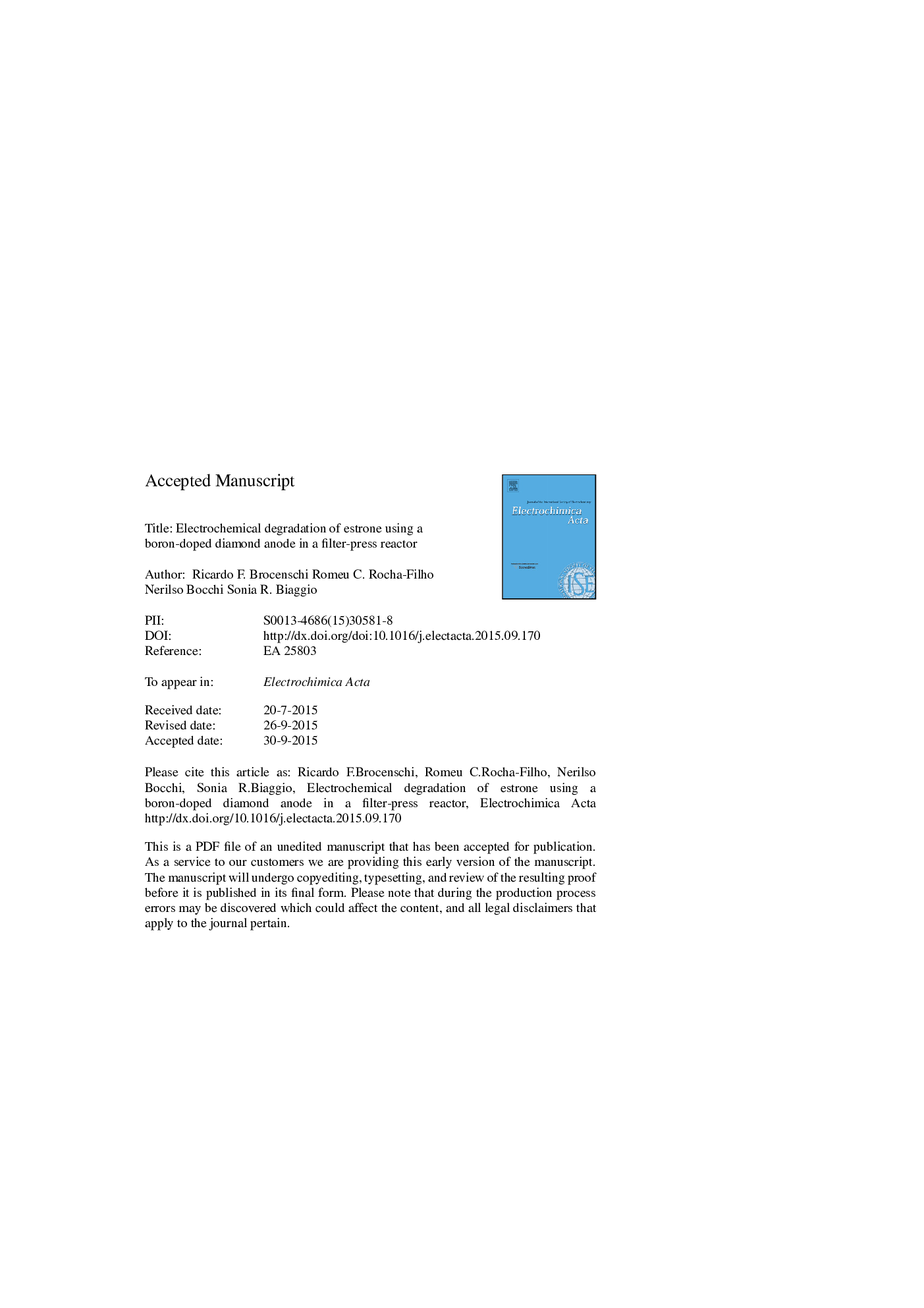| Article ID | Journal | Published Year | Pages | File Type |
|---|---|---|---|---|
| 6608064 | Electrochimica Acta | 2016 | 37 Pages |
Abstract
Estrone (E1), an endocrine-disrupting chemical (EDC) with health and environmental consequences, is commonly found in wastewater worldwide; thus, effective ways to degrade this EDC are welcome. For the first time, a one-compartment filter-press reactor with a boron-doped diamond (BDD) anode is used in the electrochemical degradation of E1. The effect of the following variables on E1 degradation (monitored through LC/UV-vis) is investigated: flow rate (qV), current density (j), concentration [E1], pH, and absence or presence of Cl- ions in solution. The best degradation performance was attained under the following conditions, with total degradation of E1 (initial concentration, [E1]0 = 500 μg Lâ1, in 0.1 mol Lâ1 Na2SO4; 0.5 L) in about 25 min: qV = 2.0 L minâ1 (kapp = 2.1 Ã 10â3 sâ1), j = 10 mA cmâ2, and pH â¤Â 7. The addition of Cl- ions (0.36 mmol Lâ1) to the E1 solution significantly enhances the rate of E1 degradation (independently of pH), to such an extent that only 10 min were needed to attain total degradation of E1. On the other hand, in the absence of Cl- ions in solution and at j = 10 mA cmâ2, the decay of the relative concentration of E1 ([E1]rel) does not depend on [E1]0, as would be expected for processes limited by mass transport; this means that OH radicals are present in excess. Under optimized conditions, the performance attained with the BDD anode was compared with that with a β-PbO2 anode; then, the higher oxidation power of the BDD anode became evident through its significantly better performance: a decay of [E1]rel of about 98 % was attained in just 30 min, compared to only 35 % for the β-PbO2 anode after 60 min of electrolysis.
Keywords
Related Topics
Physical Sciences and Engineering
Chemical Engineering
Chemical Engineering (General)
Authors
Ricardo F. Brocenschi, Romeu C. Rocha-Filho, Nerilso Bocchi, Sonia R. Biaggio,
